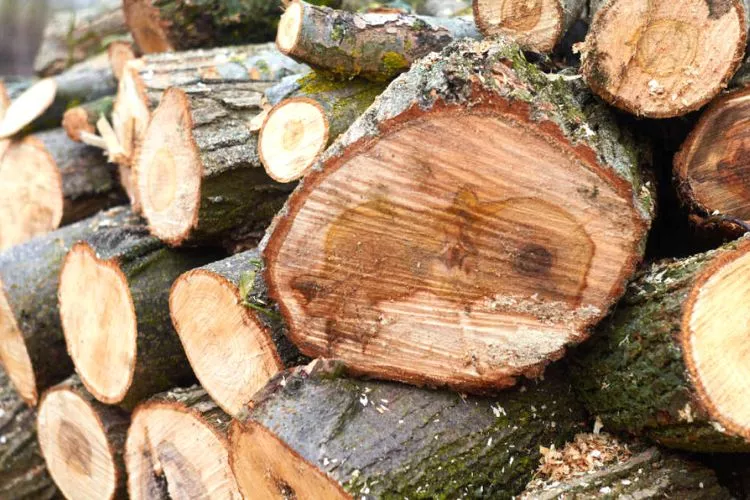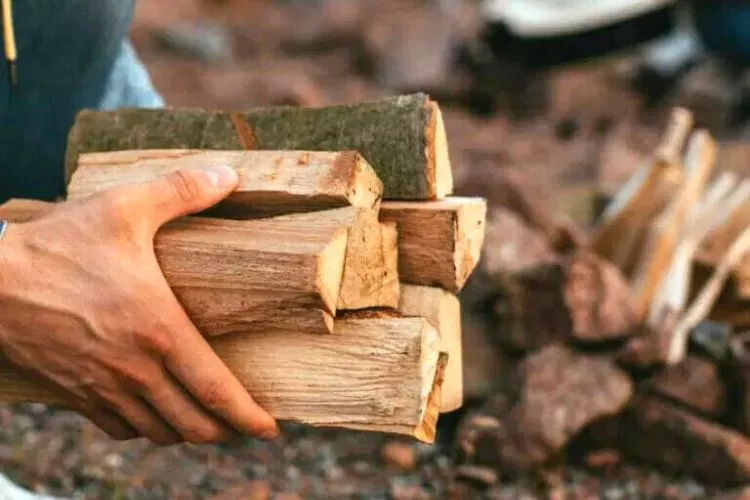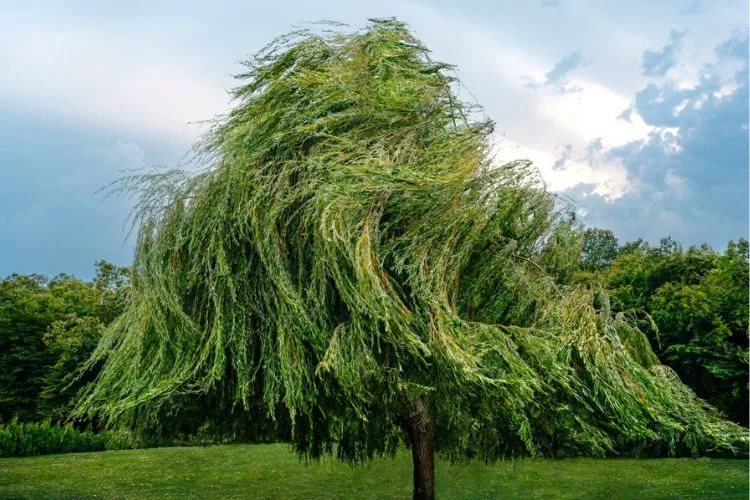Willow is a popular wood with numerous ornamental purposes and is widely used to make instruments, furniture, cricket bats, and crates. They are very common and can be found in every part of the globe, including Europe, Asia, and North America. So, is willow a good firewood? However, when it comes to using willow as firewood, it is not considered one of the best choices. The prime reason is that it burns very fast when put into the fireplace and releases relatively low heat compared to other firewood.

But they grow very fast, and the willow logs are used in the majority of wood burners or log boilers. The hardwoods are always considered better firewood than the softwoods. The main characteristics of good firewood are density and moisture content. The firewood would always burn better and generate more heat if the log is denser and drier.
Is willow a good firewood?
Though willow can be used as firewood, it wouldn’t be the ultimate choice when it comes to firewood. Though they are easily available in many places and easy and fast to grow, they are not the best choice. They are considered the least effective as they generate less heat and burn very fast, causing more creosote than other types of firewood.

The willow logs can only be burned inside the fireplace if they are effectively dried because they thrive best in moist soils. If the tree is treated with pesticide, then it can still be used in the fireplace. Since they generate less heat, they are not ideal for cold temperatures. They have a very low smoke level which is why they are quite popular for smoking delicious sausages and brisket. They are very easy to split and store compared to other hardwoods used as firewood.
Pros and cons of using willow as firewood
Pros
✅ Heat Output: Willow produces 17.6 million BTUs per cord, which is quite low compared to other firewood. Since the heat generated is a bit low compared to other firewood, they are perfect for the medium cold when you don’t require much heat from the fireplace.
✅ Readily available: Willow trees’ best part is that they are easily available in all places. Moreover, they are quite easy to grow and grow very fast, and they are not much costly, making them a popular choice for firewood.
✅ Quick to dry: Willow logs take almost 6 to 12 months to dry, depending on their growing location. Always remember split willows dry faster than large logs.
✅ Easy to split: Willow is comparatively much soft than other hardwoods and is quite easy to split into small pieces ideal for fireplaces or wooden stoves.
✅ Sap Content: Generally, all the varieties of Willow produce a large quantity of watery or milky bark sap content, which is very rich in salicylic acid. This sap, rich in salicylic acid, is a plant hormone that protects plants against pathogens. Further, this tree sap is extremely helpful for treating toothaches, fever, and other types of pain. Even the popular medicine Aspirin is also made from Willow bark.
Cons
❌ Short burn time: The biggest drawback of willows as firewood is that they burn out very fast. Since they are lightweight hardwood, they are extremely heavy when it is green, but the log becomes lightweight when it is dry, which is why it burns so quickly compared to other firewood.
❌ Heat Output: Firewood is relatable to the amount of heat they produce. Willow produces 17.6 million BTUs per cord, which is a bit low in comparison to other firewood, making it not an ideal choice during severe winters.
❌ Smoke: Willow usually doesn’t produce much smoke, but if they are not seasoned properly, it generates huge smoke that is not good.
❌ Spark and pop: Again, if willow is not dried properly and has a moisture content when burned, it would spark and pop quite often, making it very unsafe to use as firewood.
❌ Potential to leave residue: Willow logs produce lots of creosote when burned if not dried completely. If willow is green, they will produce huge creosote.
❌ Smell: Willow logs leave an unpleasant smell when burned in the fireplace, making them not an ideal choice for firewood. Moreover, if the logs are not dry, they won’t burn at all.
You May Also Like: Is Box Elder Good Firewood? | Is Silver Maple Good Firewood? | Is Aspen A Good Firewood?
How long does willow wood take to season?
If the Willow is grown in a dry and hot location, it would take around 6 months to season. However, if they are grown in a damp and cool location, it would take a minimum of 12 months to season, and in some cases, it would take almost 2 years to dry out completely. This duration of time for seasoning is quite more as compared to other firewood.

It takes so much time to the season because willow is lightweight hardwood and hence takes time to completely dry out. Moreover, due to the high moisture content in willow logs, they would rot quite faster if not split properly at the initial stage. So it is always advised to split them before they are stored for drying.
It is always recommended to burn those willows that are seasoned properly and completely dry. Otherwise, when burned, they would produce a lot of sparks that are not safe as they would have the risk of burning the surrounding areas.
Frequently Asked Questions (FAQs)
Can I burn willow in my fireplace?
You can burn willow in your fireplace, but it is always advised to use an outdoor fireplace if you are burning willow. As compared to other firewood, the willow log is quite thin and has long fibers inside the log. Due to this, if they are not cured or seasoned properly, they will produce dense smoke that will be difficult to breathe inside the room. Further, it releases less heat, making it not an ideal choice for places that have freezing temperatures.
Which willow is best for firewood?
Though willow is not the ideal choice for firewood, still, if they are used as firewood, they need to be cured completely to use as firewood. Chipped willow is the best variety of willow that is best for firewood. They grow very fast and are very easy to grow. The first harvest of this variety of willow grows within 3 years of plantation, and there is a harvest of 8-10 tonnes of dry wood per hectare for the coming years. They are also considered to be the ideal fuel for biomass boilers.
Are Weeping Willow Trees Good Firewood?
Though /weeping willow is a very beautiful willow tree, it is not the best choice for firewood. But still, they can be burned as firewood. They have several other benefits as they can be grown in various soil and are very easy to split for storing and use as firewood. They have a very light aroma and produce very little smoke and sparks. The weeping willow grows to 30 to 50 feet tall, and the bark is quite weak and prone to breakage. The name ‘weeping’ is given because the twigs and the branches are very thin and flexible, which gives the droopy weeping appearance.
Conclusion:
Though Willow is not the ideal choice of firewood, it can still be used as firewood if you are patient enough to split and dry them completely before using them. Willow as firewood is ideal for moderate temperature as it generates less heat and burns quickly. They also grow in many places and very fast and easy to grow.
So it is very important to season willow wood before using burning them. The willow wood’s sap is rich in salicylic acid, which protects plants against pathogens. Moreover, their sap is also used for treating toothaches, fever and other types of pain.


